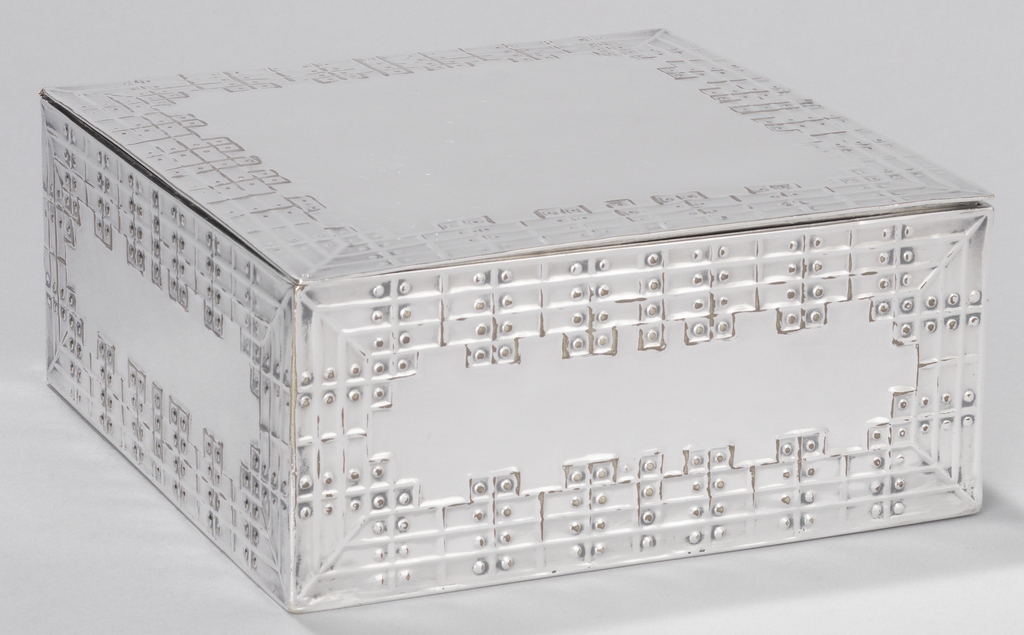Today’s luxury designers sometimes find unique ways to brand their products without a label—Christian Louboutin’s red sole, Bottega Veneta’s woven purse—while others create logo-patterns, as Louis Vuitton has done. Many mid-range product lines, like those of Apple or Starbucks, proclaim their name loudly with simple, meaningful logos. While it may seem that logos and brand identities today are most concerned with profits, the bottom line was not always the reason behind marking one’s goods.
Late nineteenth- and early twentieth-century designer Koloman “Kolo” Moser and his Viennese contemporaries used maker’s marks as a way to credit everyone involved in an object’s construction, not just the name of one company or workshop, as is common today. Moser co-founded, with Josef Hoffmann, the Wiener Werkstätte in 1903. The organization aimed to forge art and handicraft practitioners into one collaborative group that created functional products suitable to their materials, and brought good-quality art and design to ordinary people. While material costs and artists’ near-free hand in design caused price escalation, an elitist slant, and financial instability—thereby not meeting the latter goal—the Werkstätte did certainly create beautiful products.
Moser designed this box, constructed of silver-plated brass sheets, now in the Cooper-Hewitt’s collection, while a member of the Werkstätte (he left in 1907 due to financial and creative disagreements). The architectural form with stylized, geometric design is emblematic of the group’s aesthetic and focus on high-quality craftsmanship. And the five stamped marks on its base demonstrate the importance Moser put on a craftsman’s execution as much as he did on his own design.
The first mark, the Rose Mark, was registered in June 1903 and symbolizes the Wiener Werkstätte; it is perhaps the most commonly seen symbol on Werkstätte silver. It is followed by the WW monogram and two of Moser’s personal marks that incorporate his initials into different forms. The final mark includes a “T” enclosed in a “Q,” which most likely identifies the craftsman who executed the work. These marks proclaim that the workshop, Moser, and craftsman TQ all had a hand in creating this work. No one claims sole ownership over it, nor did they attempt to do so.
Aside from giving credit to the box’s makers in the early 1900s, these marks serve another purpose: today, they help curators easily and accurately date the object and its creators. For instance, the WW monogram was only seen in an oval, as it is here, between 1903 and 1905. Later on the mark took a rectangular shape. Additionally, they are simple, straightforward, and beautiful examples of graphic design in their own right. The Rose and WW marks in particular are emblems of Werkstätte standards, and for this silver box, are permanently embedded into the object.
One can’t help but wonder what tomorrow’s curators will think of the marks we see every day, printed on clothes, coffee cups, and music players that identify only a large corporation. Even if we do not know anything about TQ besides his initials, and even if the Wiener Werkstätte was too idealistic to survive, Moser and Hoffmann had a nice thought—give credit where credit is due, and proudly mark your work with your own unique graphic emblem.

